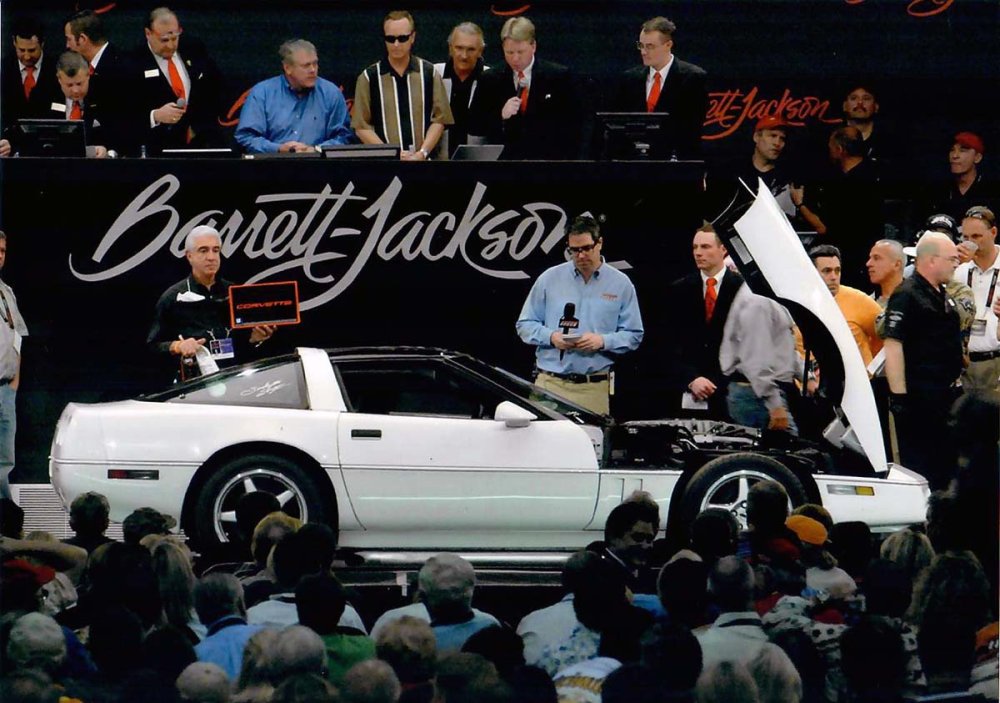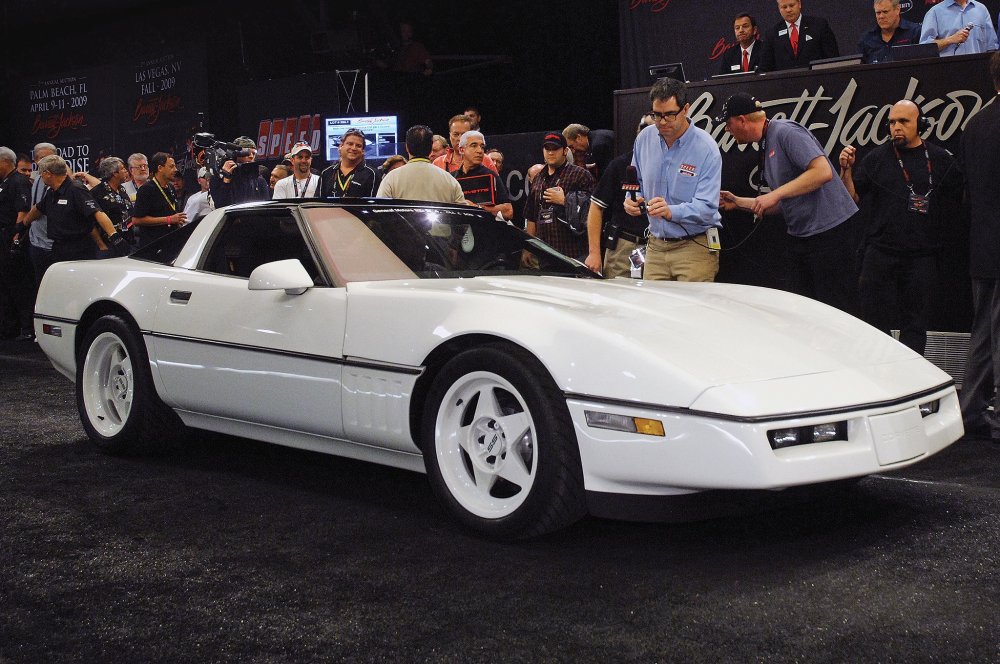C4 Chevrolet Corvette ZR-1 SS: The Ultimate Viper Killer that Never Was

Corvette ZR-1 Snake Skinner packed more horsepower and weighed far less than the Viper.
The National Corvette Museum is packed full of legendary Chevrolet sports cars, but one of the newest to arrive is the 1989 ZR-1 Snake Skinner. This was a prototype test car that spent much of its life in the GM Heritage Center before being sold to Greg Mauzy, a collector and member of the National Corvette Museum board. Sadly, Mauzy passed away in 2015, but his rare 1989 ZR-1 Snake Skinner prototype has been donated to the museum, where it will be immortalized alongside many other historic machines.
The Corvette ZR-1 Snake Skinner program never directly resulted in a production model, but many aspects of the prototype would later be used in some of the highest performance Corvettes ever. For those who aren’t familiar with the Snake Skinner package, here is a look at what made this one of the most intense designs ever created by GM engineers.
Fighting the Viper
The first Dodge Viper RT/10 Concept was introduced at the 1989 New York International Auto Show. Prior to that, the Chevrolet Corvette had no real competition in the American sports car market, but the debut of the Viper concept led the folks at Chevrolet to prepare for a fight. In 1990, Corvette Development Manager John Heinricy and his team had completed the production version of the C4 ZR-1 and sent it to market, so they turned their attention to building a ZR-1 that could take on Dodge’s V10-powered roadster.

Heinricy told his team that he wanted to develop a Corvette that could “skin the snake”, cutting weight and adding power to face off with the Dodge Viper. That led to the car being affectionately called the Snake Skinner. Not only would a serious weight reduction program improve performance, but with tightening emission regulations in the early-1990s, the Corvette could offer better performance without adding more power. In theory, this would allow the Chevy sports car to rely on smaller V8 engines that were more emission-friendly without compromising on performance.
The C4 Corvette ZR-1 was a popular and expensive model, so Heinricy and his team didn’t want to pull production models to create the Snake Skinner. Instead, they acquired one of the 84 1989 ZR-1 preproduction test cars. These were built for engineering evaluation, photography and media testing, but they were not intended to be sold to the public, as the ZR-1 didn’t actually come to market until 1990. The car picked for the project was VIN 00081.
Corvette Snake Skinner
The Corvette ZR-1 Snake Skinner project focused on weight reduction, so the first thing that the team did was remove all of the items that weren’t needed to go fast. This included the air conditioning components, the sound system, the spare tire assembly and the tire pressure monitoring system. The stock wheels were replaced with magnesium rollers from Dymag. The leather seats were replaced with cloth seats. The standard roof frame was replaced with a magnesium unit and the clutch housing followed the same path, with the stock aluminum piece being replaced with a lightweight magnesium unit. There was also a standard flywheel installed in place of the production ZR-1’s dual-mass unit. This set of modifications pushed the curb weight down below 3,000 pounds.
In 1991, the Corvette ZR-1 Snake Skinner was shipped to the company’s Desert Proving Grounds, where it received more upgrades. This started with a specially prepared LT5 from MerCruiser that offered 475 horsepower while also reducing the engine weight by about 100 pounds. The team then spent the better part of two years continuing to cut weight and by March of 1993, the Snake Skinner weighed just 2,906 pounds. With that setup, Corvette development team member Jim Ingle piloted the prototype to a quarter mile time of 12.04 at 122.2 miles per hour. For those unsure, that trap speed shows that the car would be easily capable of running in the 11-second range with a good set of tires.
In the next and final round of upgrades, titanium exhaust and carbon ceramic brake rotors were added, cutting the curb weight down to just 2,765 pounds. That allowed Ingle to get down the drag strip with an 11.88 at 123 miles per hour. Again, with modern drag radials, we could expect a car trapping 123 to be tickling the 10s.

Unfortunately, while this package was incredible in every way, it just wasn’t feasible to bring it to market. The production ZR-1 cost $63,000 and the features of this package would have raised that number significantly. Back then, the world might have stood still if Chevrolet offered an $85,000 street car. However, many aspects of the Snake Skinner package, including the various aluminum and magnesium parts, lightweight glass and the carbon fiber brake rotors would all be used in future Corvette models.
Snake Skinner II
There was so much interest in the Snake Skinner project that Chevrolet built Snake Skinner II. It looked just like the original Snake Skinner Corvette, but it didn’t feature all of the weight-saving modifications. This car had a VIN of EX6153 and like the original Snake Skinner, this second car was sold at a Barrett-Jackson auction in early 2009. Rick Hendrick purchased Snake Skinner I and Greg Mauzy bought Snake Skinner II. Mauzy would go on to buy around 26 cars from the GM Heritage Museum to add to his collection of more than 150 vehicles.
Sadly, Greg Mauzy passed away back in 2015, but to help tell the story of the Snake Skinner program, his unique Corvette ZR-1 has been donated to the National Corvette Museum. Snake Skinner I still resides in Hendrick’s private collection.
National Corvette Museum image of Snake Skinner II atop this piece.
Photos: Super Chevy
